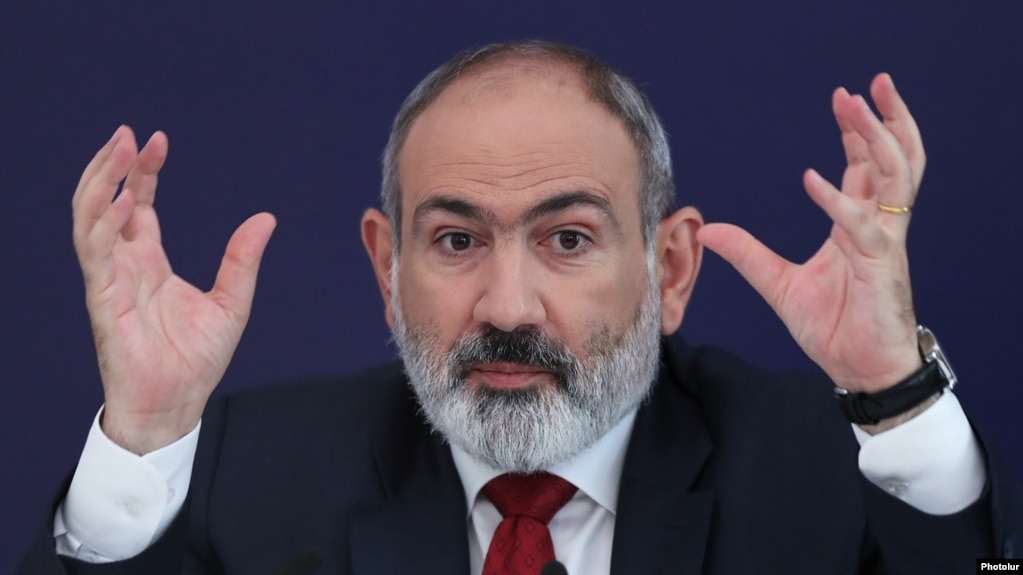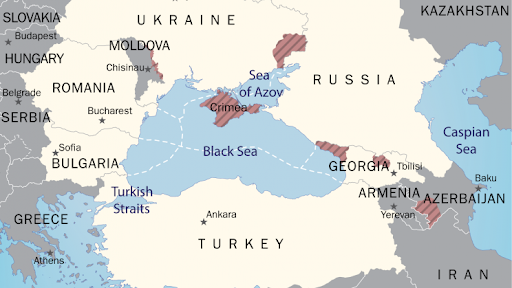 Armenian PM Nikol Pashinyan (above) is turning to the West
Armenian PM Nikol Pashinyan (above) is turning to the West
Armenia no longer disputes that Nagorno-Karabakh is part of Azerbaijan. The prospect of peaceful resolution of a regional conflict ought to be good news, but this is an incredibly complex situation with an external environment where a brutal war is raging with no end in sight, and the protagonists pursue contrarian interests.
A settlement over Nagorno-Karabakh conflict leading to peace and reconciliation might open the pathway to Armenia’s (and, Azerbaijan’s) induction into the EU and NATO in a foreseeable future. The Armenian lobbies in European capitals and Washington wield much political influence. Oil-rich Azerbaijan eyes European market.
That said, Russia will resist the EU and NATO’s expansion into Transcaucasia, a highly strategic geographical region on the border of Eastern Europe and West Asia, straddling the southern Caucasus Mountains and bridges the Black Sea and the Caspian. Armenia is in a military alliance with Russia but Prime Minister Nikol Pashinyan has increasingly appealed to the West, including the EU.
Earlier this year, the EU set up a civilian mission in Armenia in response to a request from Yerevan, including operations at several points along the border with Azerbaijan. Meanwhile, the EU also signed a gas supply deal with Baku last year. European Commission President Ursula von der Leyen praised Azerbaijan as a “crucial partner” in mitigating Europe’s energy crisis.
The EU’s strategic interest is for Armenia and Azerbaijan to minimise Russian influence in Transcaucasia. With so many powerful geopolitical players involved in the Caucasus region, the situation is delicate. The Spanish city of Granada is the place to watch where in two weeks, close to 50 European countries are expected for talks in the European Political Community format — including Armenia and Azerbaijan.
Russia will fear for the security and stability of its Muslim republics in the Caucasus if Western intelligence sets up shop in that volatile region with a violent history. It is no secret that the US fuelled Moscow’s two Chechen Wars (1994-2000.)
Taking advantage of Russia’s preoccupations in Ukraine, the US and the EU have inserted themselves aggressively into the Black Sea region and the Caucasus. Armenia is a low hanging fruit. The 2018 colour revolution (“Velvet Revolution’’) presented itself as an opportunity for Armenia to realign its foreign policy in the European direction without any overt belligerent anti-Russian or pronounced pro-Western geopolitical orientation.
Europe understood the geopolitical potentials with far greater prescience than Russia. Moscow is paying a heavy price today for its complacency. In Pashinyan, Moscow has a “frenemy” who pretended to be its friend and apparently responsive, while biding time to take his country out of the Russian orbit. That opportunity came as Russia’s special military operation began in Ukraine last year.
The Armenian diaspora in France was attuned to Pashinyan’s skilful manoeuvring and President Emmanuel Macron was willing to lend a hand. The Biden Administration and the EU weren’t far behind. Pashinyan’s decision to decouple Armenia from Nagorno-Karabakh has the West’s tacit approval, being the first necessary step in the journey toward the Atlantic system.
Nonetheless, it is going to be a winding road and Russia can make it a difficult journey. Pashinyan is a tough, wily customer. The trickiest part is going to be his manoeuvring to take Armenia out of the CSTO and shut down the Russian base in Gyumri.
Moscow is seized of the big picture of NATO’s plan to expand its presence in Caucasus and from there, wet its feet in the Caspian Sea and take a leap into the Central Asian steppes.
Breakthrough in Central Asia
Earlier this week, the US made a diplomatic breakthrough with the inaugural presidential meeting of the so-called C5+1 Leaders’ forum — Kazakhstan, Kyrgyzstan, Tajikistan, Turkmenistan, Uzbekistan and the US — chaired by President Joe Biden on the margins of the United Nations General Assembly in New York on Tuesday.
Biden called it “a historic moment” for their cooperation “that is grounded in our shared commitment to sovereignty, independence, territorial integrity” — an oblique reference to the US agenda to roll back the Russian dominance in the region. In the US assessment, the ex-Soviet regional capitals feel uneasy that Russia’s military intervention in Ukraine is setting a bad precedent, as all Central Asian countries have ethnic Russian populations.
Biden discussed counterterrorism cooperation, regional economic connectivity, a new business platform “to complement our diplomatic engagement and better connect our private sectors”, and importantly, “the potential for a new critical minerals dialogue to strengthen our energy security and supply chains for years to come.”
The White House readout said the six presidents discussed “a range of issues, including security, trade and investment, regional connectivity, the need to respect the sovereignty and territorial integrity of all nations, and ongoing reforms to improve governance and the rule of law.” It underscored that Biden “welcomed his counterparts’ views on how our nations can work together to further strengthen the Central Asian nations’ sovereignty, resilience, and prosperity while also advancing human rights.”
The readout cited three initiatives: USAID will convene a C5+1 Regional Connectivity Ministerial in Central Asia in October “to discuss concrete actions”; launch of a C5+1 Critical Minerals Dialogue “to develop Central Asia’s vast mineral wealth and advance critical minerals security”; and, US support for investment to develop a Trans-Caspian Trade Route (so-called “Middle Corridor”) through the Partnership for Global Infrastructure and Investment (a collaborative effort by Group of Seven to fund infrastructure projects in developing countries.)
On a parallel track, curiously enough, Azerbaijani President Ilham Aliyev was invited as an “honoured guest” to the recent Central Asian summit in Dushanbe on September 14-15. This is the first time that the forum known as the Consultative Meeting Of the Heads of States of Central Asia invited a leader from outside Central Asia to their annual conclave. Indeed, regionalism is on the march in the steppes against the backdrop of the geopolitical shock of Russia’s invasion of Ukraine, which is now reaching an attrition dimension.
The Middle Corridor is conceived as linking the containerised rail freight transport networks of China and the EU through the economies of Central Asia, the Caucasus, Turkey, and Eastern Europe via the Caspian and Black Sea ferry terminals bypassing Russian territory.

The tectonic shift in the geopolitics of the Caucasus figured in President Putin’s meeting on Wednesday with the visiting Chinese foreign minister Wang Yi at St. Petersburg as well as during the talks in Tehran between the visiting Russian Defence Minister Sergei Shoigu and the Iranian military officials. This topic is sure to be discussed between Putin and Xi Jinping and during his forthcoming visit to China next month.
There is a convergence of interests between Russia and Iran over area denial to the US in strategic hub that the Caspian is. But oil-rich Azerbaijan makes an ambivalent partner for Moscow, while Tehran has a troubled relationship with Baku. It is entirely conceivable that the EU and the US will promote Armenian- Azeri rapprochement (which Turkey is also promoting for own reasons.)
The prospect of a long-term western presence in the Caspian and Central Asian regions through the Black Sea and the Caucasus poses a profound challenge for Russian diplomacy. The paradox is, while the West failed to defeat Russia in the Ukraine war, it is gaining ascendancy on Russia’s “near abroad” in an arc of encirclement.
How far China is willing to join hands with Russia in this geopolitical contestation remains to be seen. The US and the EU are tactfully opting not to challenge Chinese interests directly. In fact, China may even have use for the proposed US-backed Trans-Caspian Transportation Corridor — Kazakhstan’s Silk Road.
